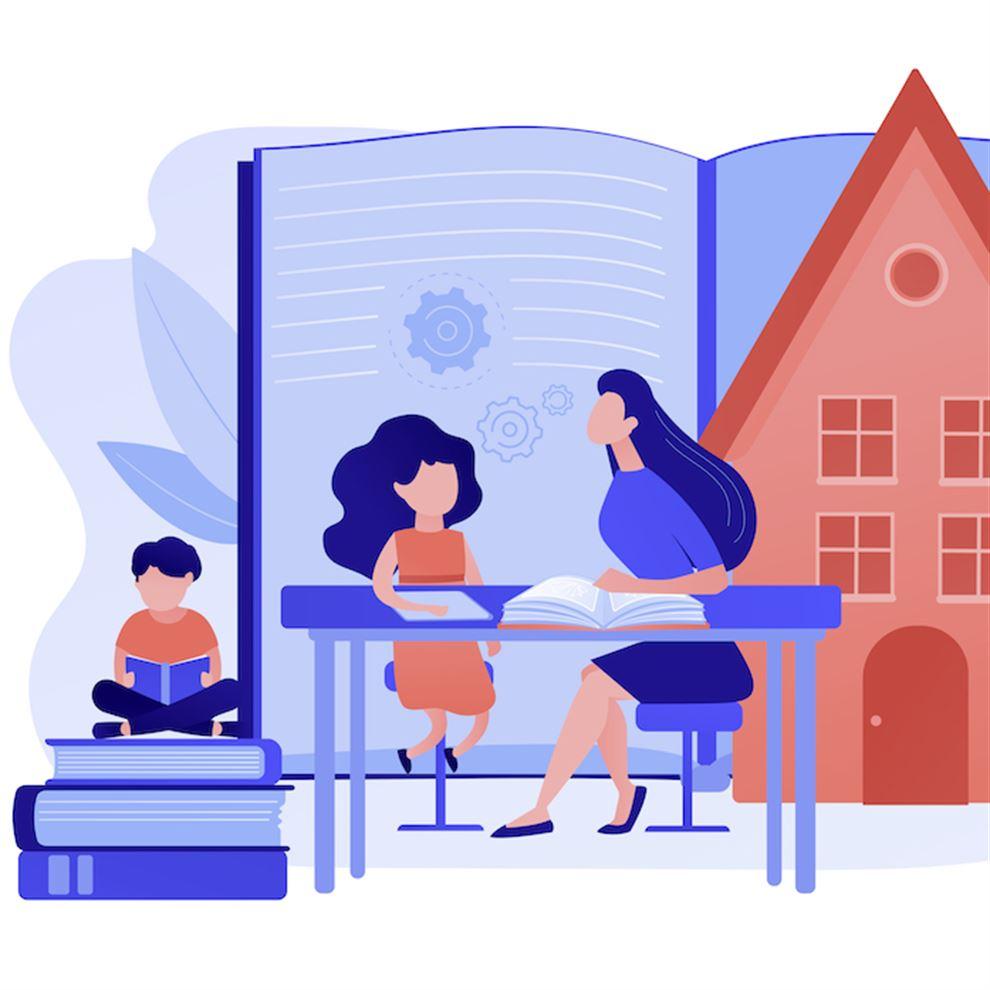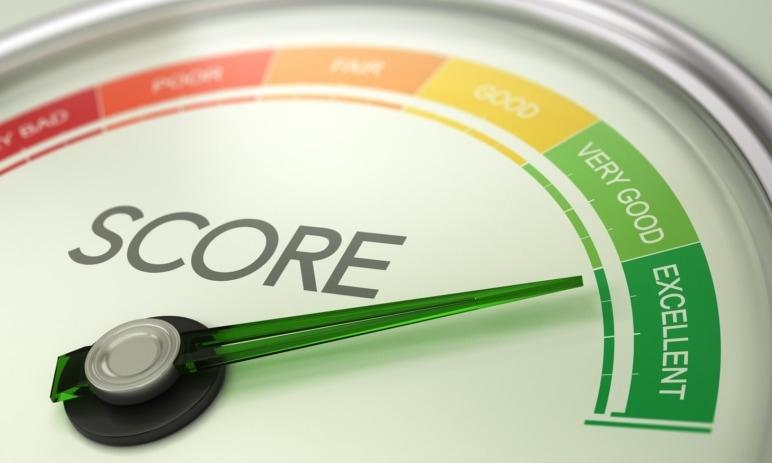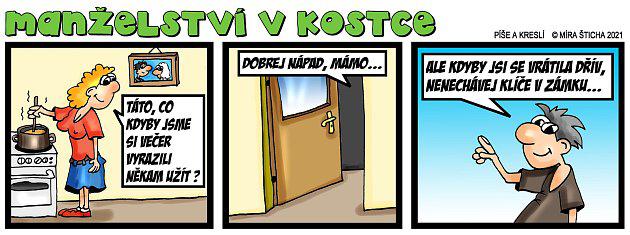How to teach first graders to read and write at home when they can't go to school now?<
Is it possible to briefly say what parents of first-graders who have just started preparing for this skill at school should or can do now - as far as reading is concerned? Some sometimes learn online, some only receive assignments by email.
It is very important for children to infer letters with the help of all their senses in order to anchor them well. There are many opportunities at home that are not available at school. They can model letters from different materials (from dough, newspapers, write on a tray with semolina, in autumn you can also use chestnuts and so on), just play.
Later, when the children are already reading, it is important to have a pleasant atmosphere, well-being - not under stress, under pressure, even though we understand that it is sometimes difficult for parents. We definitely recommend talking with the children about what they have read and thus creating internal motivation .
OUR TIP: Where to practice reading and writing?
Try our Syllabary in Flexibooks format, in which you will find many beautiful didactic videos and games. You can also use the School at a Glance portal, where interactive exercises, worksheets and games are available for parents and children to work together, both for the analytical-synthetic and genetic methods.
Experts have good experience with self-assessment in exercise books and workbooks from these portals. The child evaluates himself which letter on the line he did best, which one the worst and why. Samo is so aware of bad habits and can focus on them.
And what about writing? Before writing, the child definitely needs to warm up his hand - say nursery rhymes, you can connect each of them to a single finger on the hand, circle the wrist. First write the letters in the air, in the sand with a stick, in the flour with your finger, start from the largest to the smallest shape. Above all, don't put pressure on the child, it's not about whether the letter is crooked, but about the correct shape, then you can also improve the arrangement of the letter. On the other hand, what should parents avoid when it comes to writing and reading the smallest schoolchildren? Above all, stress, pressure, impatience. Reading and writing is not a simple skill. Take breaks, just write/read one line and maybe do a few squats, jog, jog, then continue with the next line.
ChildrenSupport your preschool children in the development of fine motor skills. Here are some tips
Home is an environment where you can work with the child individually, it is not necessary to switch the child. On the contrary, it is important to create a positive motivation for reading and writing. However, be careful about holding the pencil and sitting correctly! If the child has already learned a bad grip, it is better not to teach it by force, only if the child can handle it. He might lose interest in writing because he won't be able to write as much as he needs to.
Do you have any recommendations for parents of slightly older first graders? For example, for those who already have a third-grader at home who was looking forward to school, the restrictions are hard to bear and he is boycotting online school, including reading, like a greaser. Keep calm. Even if things don't go well, he won't miss anything, everything can be caught up. Consider your strengths realistically. How do you personally manage to combine your work and home schooling? Don't ask the impossible for yourself or your child. If you miss something, write an excuse and work on the task later.
CoronavirusSchool at home: Specific tips on how to learn online with children due to school closures
If you can't explain something to your child yourself, call for help - either call his teacher directly or someone close to you who he can understand and maybe have more patience with your child than you do. And your child more patience with him than with you. If you don't have an online course that has a timetable, structure the time so that it is clear when it is time for learning and when it is free.You need to realize that during a lesson at school there is more time for relaxation - for questions classmates also answer, not always just your child. Work at home is therefore more intensive. It is necessary to think more about breaks, about the possibility to relax - for example by moving outside. Give him contact with friends - for example by phone or online conversation. They can therefore work out some tasks together. You can also write a look or a letter to your friends by mail - you'll practice typing right away.

Reading is basically taught in schools using two methods, what are its advantages and disadvantages? These methods cannot be qualitatively compared, rather one or the other may "sit" better for each child.
The biggest advantage of the genetic method is that children know letters earlier, and are thus able to write earlier, even if for now only in capital letters (it is motivating for them). On the other hand, some children do poorly with auditory analysis – they do not hear the word when spelling or, on the contrary, cannot spell the word, so the syllables in the analytical-synthetic method are easier for them.
GENETIC METHOD or ANALYTICAL-SYNTHETIC?
You can find online practice for both methods on the School with a View portal. In addition to exercises focused on practicing individual letters, we also offer a preparatory period in which we work with spatial orientation and auditory analysis, in addition to topics that are close to children. These exercises are classified under the genetic method, but you can also use them for the analytical-synthetic method.
I am looking at the award-winning Písmenková soup from your publishing house, which brings 28 modern poems about the Czech alphabet - can you tell how old children it is intended for? If I read it to a preschooler, isn't that prematurely pushing her to read? The book is primarily aimed at first graders, but reading it to a preschooler or preschooler will be very helpful. It has nothing to do with prematurely pushing a child into reading; you will be the one to read. With this question, we are touching on a long-term problem that accompanies the period of initial reading - there is a huge disproportion between the child's mental maturity and the nature of the texts he is able to read.
Ema has a bowl - that's right for toddlers
If we use the notorious sentence Ema has a bowl, then in terms of production it belongs to the age of 2.5 years. Nevertheless, we found it for decades in Slabikáře for six-year-old children. The low motivation to read stemmed, among other things, from the fact that the children picked on sentences while reading, which rightly seemed primitive and far below their mental level. This problem has several solutions. In addition to the fundamental innovation of first reading books or replacing more complex words in the text with pictures, it is also the reading of texts corresponding to the intellectual maturity of the child.
ChildrenRead to children from birth: You develop their vocabulary and imagination
The little reader can thus see that the skill of reading opens the door to books that satisfy their current perceptual needs. If we want children to enjoy learning to read, let's give them the opportunity to listen.
In addition to Písmenková polívka, we recommend the Čti+ edition, in which you will find both fiction and poems, as well as popular science literature. Thanks to it, the child deepens his natural interest in the world around him, satisfies his curiosity and also acquires reading comprehension. Individual booklets are marked according to the age of the child, which corresponds to the difficulty of the topic and the text. If your child is a better reader, don't be afraid to reach for a higher age group.
The child should be able to read by the end of the third grade
Some parents support the ability to read in preschoolers, is this good or not? If the child wants to read on his own, do not prevent him, but definitely do not overload him and do not force him to do more activities. However, it is better to correct his mistakes, it is important that he does not fixate on them. How to prepare a child for future reading and writing? , think of words that start with a certain letter. You can also ask what the word dog starts with, for example, or spell words as a riddle to see if the child can guess them - for example k-o-č-k-a.
PreschoolProverbs and nursery rhymes: Why do children need them and how does it harm them if they don't know them?
This will support the child's auditory analysis and vocabulary. For the development of graphomotor skills, use graphomotor exercises for preschoolers, let the child draw and scribble, for example, in sand, flour and so on. Some children learn to read, for example, at the age of five, some only at school - won't the latter be behind? They won't. Progress in reading depends on the maturity of the central nervous system, every child develops differently, and delay is not a bad thing as well as mastery of this skill earlier. The most important thing is to keep the motivation to read.
By the way, according to the Framework Education Program, a child should be able to read at the end of the third grade, until then they learn it. And experienced teachers are prepared to have students with different levels of reading and writing skills in their class in the first year and know how to work with it.
An interesting publication that made its mark at this year's BELMA Awards (The Best European Learning Materials Awards) among the best European learning materials is Písmenková polívka. An unusual book about the Czech alphabet from Nakladatelství Fraus won a special jury prize. "The role of modern teaching materials is no longer to compensate for the lack of information, but rather to regulate its excess, which is why I am pleased that our fine illustrations and easy-to-read typography can help children and parents in getting to know the modern Czech language," says Jiří Fraus.
The competition is announced annually by the European Association of Textbook Publishers in cooperation with the Frankfurt Book Fair and the International Association for Research on Textbooks and Educational Media.
"With the book Písmenková polívka, I humbly tried to join the long line of collections of children's nursery rhymes to the letters of the alphabet, firmly established in the Czech literary tradition. My ambition was to create a set that is modern, contemporary and close to the life experience of children. If the jury of the BELMA competition saw it as such, I am sincerely happy about it," commented author Petr Kukal on winning the prestigious award. "Visually, the book is based on my award-winning bachelor's thesis Slabikář - delicate illustrations in combination with a print screen, overprints and muted colors create a whole, which is complemented by modern texts of poems in a clean graphic arrangement with easy-to-read typography," adds illustrator Soňa Juríková.
The letter soup contains 28 poems and related additional questions and activities. It continues the long tradition of didactic nursery rhymes, which reproduce a specific letter on a small area of quatrains, thus helping children to remember it.
Caring for and raising a child

 Tags:
Tags: Prev
Prev







